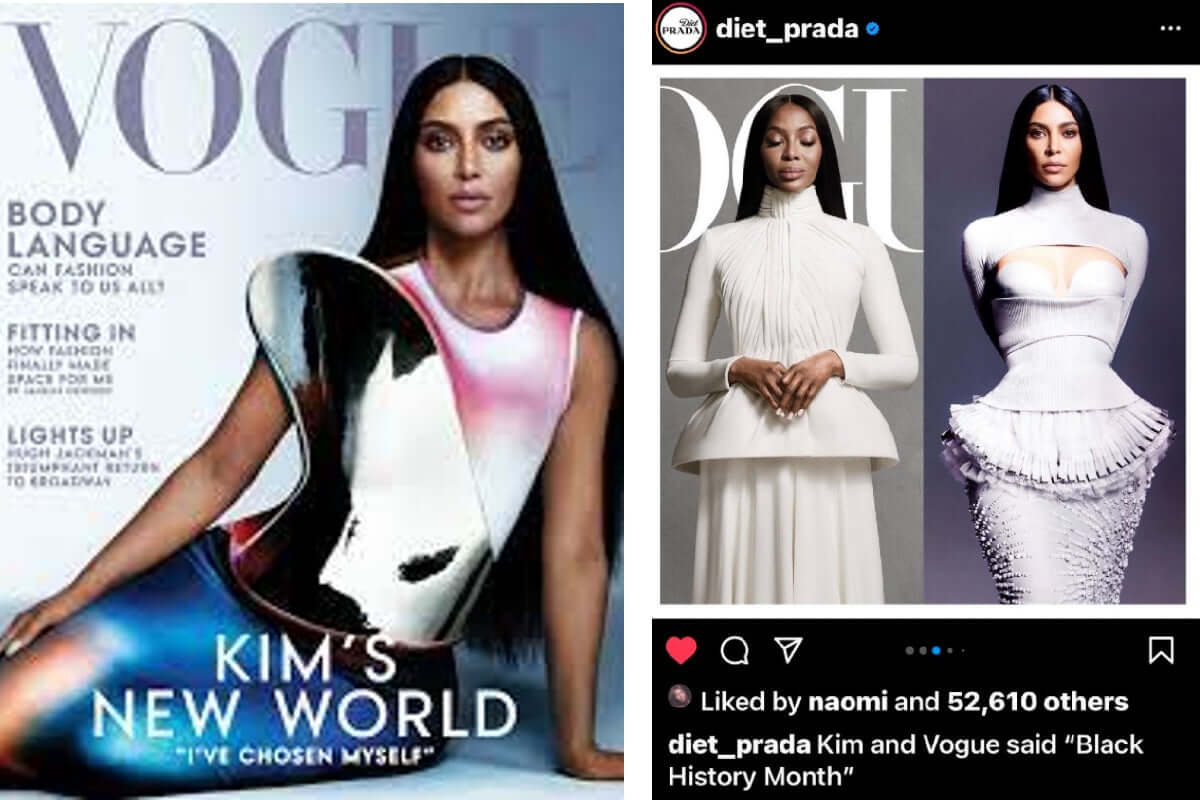As the tide has turned for journalism over the past century, one thing has remained to be lucrative and powerful: sensationalism. People may think that cancel culture is a relatively new phenomenon, but cancel culture has always been a part of what is considered a free market, and journalism. People have opinions on anything presented to them. People voice those opinions. They now do it on social media platforms, which allow millions of people with the same opinions to criticize or praise in unison, whereas counterculture critics of the past were more fragmented and overpowered by the mainstream.
Bitchy tabloids, a.k.a. self deemed arbiters of taste, dominated the 2000’s. When print “died”, tabloids evolved into website gossip blogs, and finally culminated into what we have today: anonymous social media critics. Diet Prada started as an outsider critique on high fashion by two (formerly) anonymous individuals in 2014. I don’t know if the founders could’ve ever imagined the scope of influence the account has today, as they boast 3 million followers.
To casual scrollers on Instagram, exclusivity and luxe seem to ooze from these faceless accounts with a hyper-focused chin-up perspective, and hundreds of thousands of followers. Depending on who you ask, accounts like Diet Prada are a credible source of industry information. But according to others, they’re anything but that.
I need Diet Prada gone from this industry I'm so serious
— linda (@itgirlenergy) February 9, 2022
Diet Prada reveals veiled parts of fashion that the everyday person might not have heard of before, such as the infamous racist Dolce & Gabbana scandal that cost the brand their reputation. This sort of exposé on the part of Diet Prada creates a sort of parasocial relationship between the average consumer, and those in the fight against “the man”. As inclusivity has become a focus for media and brands over the years, Diet Prada followed the profitable trend of successfully positing itself as a voice of the common people against exclusive, long standing institutions. However, the page has been slammed for its reliance on sensationalism. And just today, they proved to be as tacky and insensitive as the brands they’ve called out before.
In a time where we are sullied with new information everyday, mass online responses like outrage or critique are expected. But because we live in a world where everything can be capitalized upon, genuine things like Black outrage are being demeaned by non-Black people looking for clicks and engagement – and it’s gross. Yesterday, Diet Prada posted a montage of photos of Kim Kardashian, compared to similarly styled images of Black women such as Beyonce, Nina Simone, and mainly Naomi Campbell. Now, it’s no secret that celebrities like Kim Kardashian have been publicly accused with receipts of blatant cultural appropriation of Black women. However, Diet Prada used this valid outrage for a post that was frankly disrespectful, and garnered more likes in the first 7 hours of posting, than 4 of its 6 most recent posts combined. The caption read “Kim and Vogue said ‘Black History Month’”, and featured Vogue’s March 2022 issue.
Although anyone who knows the slightest thing about publishing would know that Kim K probably didn’t have much to do with the creative direction or styling, the caption insinuates that 1. This was Vogue’s cover for Black History Month, and 2. Kim created the concepts for the shoots.
They’re racist for exploiting disingenuous outrage clicks https://t.co/Y5mgn4z343
— thatadult (@rianphin) February 9, 2022
The thousands of commenters slam vogue and Kim Kardashian, relishing the act of exposing past examples of racist moments from either party. Diet Prada also chose to pin comments that follow the insinuation that this cover and spread had anything to do with Black History Month, and even a comment that questions why the late André Leon Talley has yet to be featured by Vogue.
They fail to mention that Kim Kardashian was styled by a Black stylist, Carlos Nazario, and that two of the images she is compared to featuring Naomi Campbell, were also styled by Nazario. Instead of highlighting a Black creative during Black History Month, they chose to take his work without credit, use it to spread misinformation as a means of getting more attention through collective outrage. I’ll even take it as far as to say that they inadvertently accused a Black creative artist of contributing to cultural appropriation in the fashion industry – and they did this all during Black History Month...
Not to mention, to use the late André Leon Talley’s name as a means to promote this narrative only adds insult to injury. ALT passed away in late January, when the February issue for Vogue was definitely already finished, and the March issue was likely already in pre-production. We don’t know when, if, or how Vogue plans to feature him, but connecting his passing to add more fuel to the fire was exploitative at best.
Racism has become profitable in a new way, a way that forces people of color into an awful position. I want others to realize how anti-Black racism is a part of our world in ways that aren’t always obvious, but are harmful and insidious. But, I don’t want non-Black people preying on the moral compass of those against racism to create a narrative that brings them social or monetary capital. It’s demeaning, and frankly feels racist.
If you’d like to support Carlos Nazario, check out some more of his work here. Other publications like Black Fashion Fair serve as an educational and communal platform that lift up Black designers and the future of fashion.
Written by Adora Mehala



